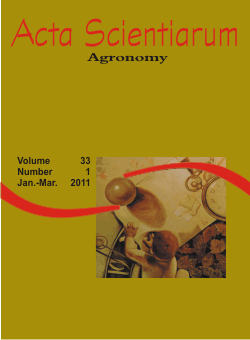<b>Ex vitro acclimatization of <em>Cattleya forbesii</em> and <em>Laelia purpurata</em> seedlings in a selection of substrates</b> - doi: 10.4025/actasciagron.v33i1.3939
Resumo
Four substrates were compared (peat, no. 2 gravel only, mixture of no. 2 gravel and peat at a 3:1 ratio, and xaxim) for use in ex vitro growth of Cattleya forbesii and Laelia purpurata - Orquidacea. A substrate x species interaction was observed for the variables vigor and height, showing that each species has its own specificity for substrate. For C. forbesii, xaxim placed first in two of the four assessed parameters. Next came the gravel:peat substrates and peat in the second position for two parameters and in third place for two. In last place was gravel, which was in fourth place for all four parameters assessed. For L. purpurata, the substrates with the greatest number of parameters in first and second positions were gravel:peat and peat, both with two first positions, one second and one third. Next was xaxim, which had one second position, two third positions and one fourth. As the last came gravel, which had one second position and three fourth positions. Xaxim was the best substrate for C. forbesii, but could be replaced, with a minor reduction in performance, by the no. 2 gravel:peat mixture. For L. purpurata, the best substrate was no. 2 gravel:peat mixture. The low effectiveness of the no. 2 gravel substrate when compared with no. 2 gravel:peat provides evidence of the importance of organic matter for these orchids.Downloads
DECLARAÇÃO DE ORIGINALIDADE E DIREITOS AUTORAIS
Declaro que o presente artigo é original, não tendo sido submetido à publicação em qualquer outro periódico nacional ou internacional, quer seja em parte ou em sua totalidade.
Os direitos autorais pertencem exclusivamente aos autores. Os direitos de licenciamento utilizados pelo periódico é a licença Creative Commons Attribution 4.0 (CC BY 4.0): são permitidos o compartilhamento (cópia e distribuição do material em qualqer meio ou formato) e adaptação (remix, transformação e criação de material a partir do conteúdo assim licenciado para quaisquer fins, inclusive comerciais.
Recomenda-se a leitura desse link para maiores informações sobre o tema: fornecimento de créditos e referências de forma correta, entre outros detalhes cruciais para uso adequado do material licenciado.




















































